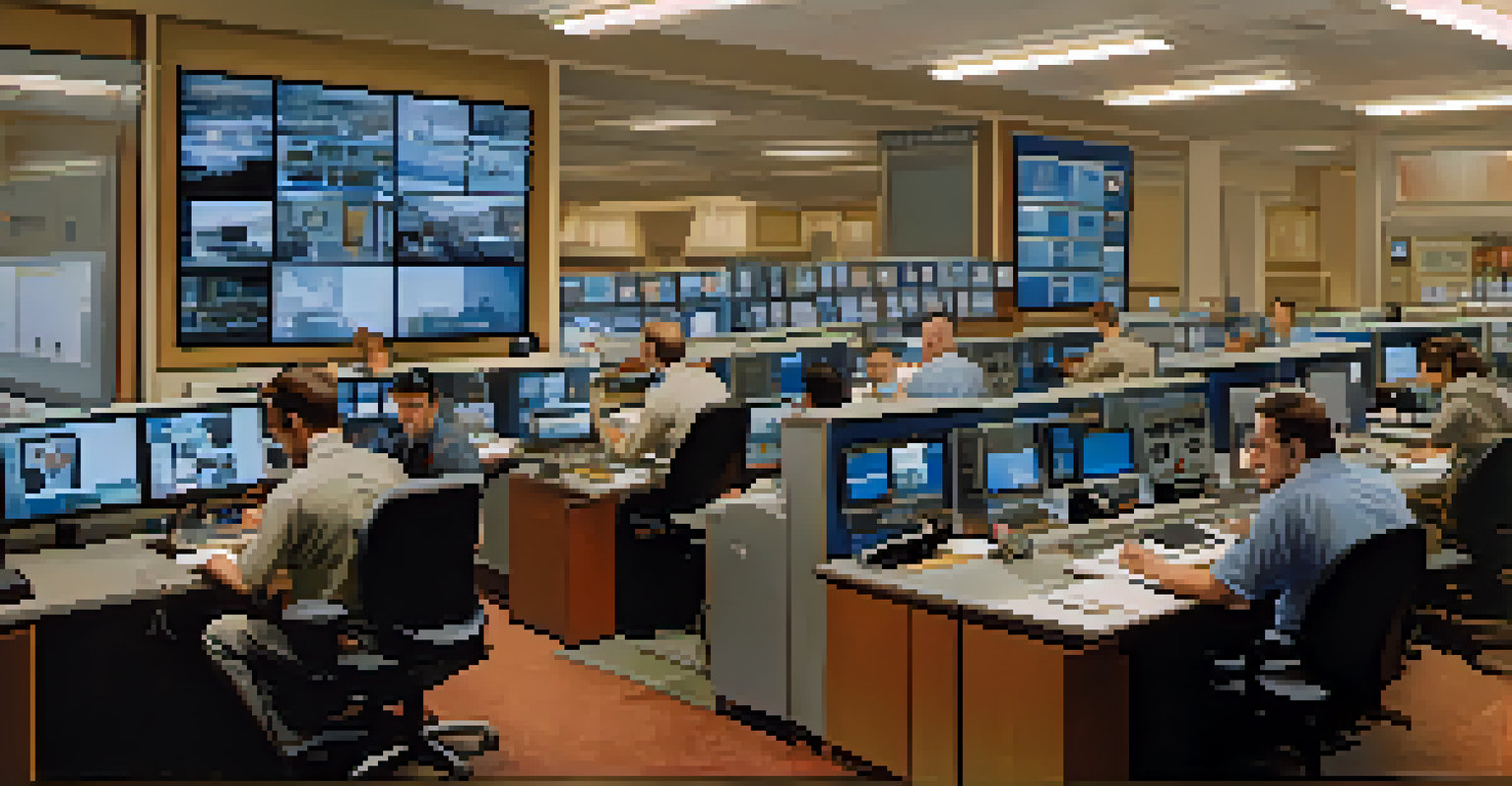Choosing Between Monitored and Unmonitored Security Systems

Understanding Monitored Security Systems
Monitored security systems are designed to keep a watchful eye on your property 24/7. These systems typically involve a professional monitoring service that alerts authorities when an alarm is triggered. This means that if something goes wrong, help can arrive faster, providing peace of mind for homeowners.
Security is not a product, but a process.
Imagine you're on vacation and receive an alert that your alarm has gone off. With a monitored system, the monitoring center quickly assesses the situation and contacts the police or fire department if necessary. This level of response can be crucial in emergencies, making monitored systems a popular choice for many.
However, this peace of mind comes at a cost. Monthly fees for professional monitoring can add up, which is something to keep in mind when considering your budget for home security.
Exploring Unmonitored Security Systems
Unmonitored security systems operate a bit differently. Instead of relying on a professional service, these systems alert you directly when there’s an issue, often through a phone app or loud alarms. This means it’s up to you to react and take action, whether that’s calling the authorities or checking your property.

Think of unmonitored systems like a smoke alarm that beeps loudly when triggered. While it alerts you, it doesn’t notify anyone else. If you’re home, this might be adequate, but it can be risky if you’re away and unable to respond quickly.
Monitored Systems Offer Quick Response
These systems ensure a rapid emergency response through professional monitoring, providing peace of mind for homeowners.
On the plus side, unmonitored systems are generally more affordable, as they don’t come with ongoing monitoring fees. This makes them an attractive option for budget-conscious homeowners who are comfortable taking personal responsibility for their security.
Pros and Cons of Monitored Systems
When weighing the pros and cons of monitored security systems, the benefits are clear. The biggest advantage is the immediate response to emergencies, thanks to professional monitoring. This can deter burglars and provide invaluable support during crises, ensuring that help is dispatched promptly.
The best way to predict the future is to create it.
However, the downside includes the ongoing costs associated with these services. Monthly fees can vary significantly based on the level of service and features included, which might not be ideal for everyone. Additionally, some homeowners may feel uneasy about sharing their data with a third-party monitoring service.
Ultimately, the decision comes down to how much you value immediate professional assistance versus the cost savings of managing your own security.
Pros and Cons of Unmonitored Systems
Unmonitored security systems have their own set of advantages and disadvantages. On the upside, they are often less expensive not just in terms of initial installation but also in ongoing costs. You’re not tied to any contracts or monthly fees, leaving you with more financial flexibility.
However, the drawbacks can be significant. Without professional monitoring, you may not receive help in a timely manner when an alarm is triggered. If you’re not home to respond to alerts, valuable time could be lost, potentially allowing a break-in to escalate.
Unmonitored Systems Save Money
Typically more affordable, unmonitored systems eliminate ongoing fees, appealing to budget-conscious individuals.
Additionally, the effectiveness of unmonitored systems largely depends on your vigilance and availability, which might not be reliable for everyone.
Assessing Your Security Needs
Before deciding between monitored and unmonitored systems, it’s essential to assess your specific security needs. Consider factors such as your home's location, the crime rate in your area, and whether you frequently travel. These elements can help you gauge how much risk you are willing to take.
For instance, if you live in a high-crime area, a monitored system may provide the extra layer of security you need. On the other hand, if you’re in a safe neighborhood and are often home, an unmonitored system may suffice.
Also think about your lifestyle. If you're often away from home, you might value the quick response of a monitored system more than the cost savings of going unmonitored.
Budget Considerations for Security Systems
Budget is a significant factor when choosing between monitored and unmonitored systems. Monitored systems typically come with an upfront cost for equipment, plus ongoing monthly fees for monitoring services. This can add up quickly, so it’s crucial to factor in long-term expenses.
Conversely, unmonitored systems often entail a lower initial investment and no recurring fees, making them appealing for those on a tighter budget. However, consider the potential costs of a break-in or emergency if your system fails to alert someone in time.
Assess Your Security Needs First
Evaluating factors like location and lifestyle is crucial in determining whether a monitored or unmonitored system suits your security requirements.
It’s a balancing act: weigh the financial implications against your peace of mind and safety needs to find a solution that works for you.
Making Your Final Decision
After exploring the options, it’s time to make your final decision. Reflect on your personal preferences, lifestyle, and budgetary constraints. Consider not just the initial costs but also the value of peace of mind that comes with having a reliable security system.
You may want to consult with security professionals or read reviews from other users to gain insight into how different systems perform in real-world situations. Sometimes, firsthand experiences can highlight issues or benefits that aren’t immediately obvious.

Ultimately, the right choice for you will be the one that aligns with your security needs and gives you confidence in your home’s safety.